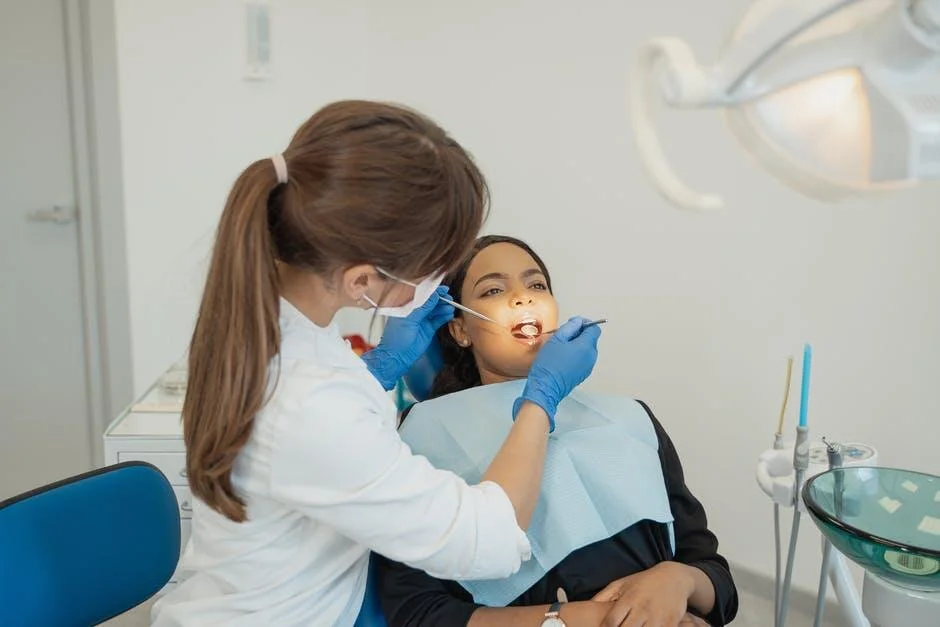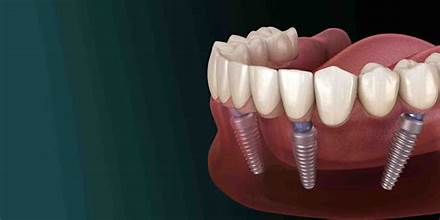HEALTH
A Comprehensive Guide to the Types of Orthodontic Treatment for All Ages

A dazzling smile isn’t just an aesthetic asset; it’s a testament to your health and confidence. The right orthodontic treatment can transform your smile at any age. It can also boost your self-esteem.
This guide covers the types of orthodontic treatment for all ages. It aims to help you make informed choices about your oral health. Read on to learn more.
The Importance of Orthodontic Treatment
Orthodontic treatment is more than just straightening teeth; it improves your overall oral health. Misaligned teeth can cause various dental issues, including difficulty chewing, speech problems, and even gum disease. By correcting these issues early, you can avoid more serious health problems down the line.
Having crooked teeth can also impact your confidence. It can make you hesitant to smile, laugh, or even talk freely. Orthodontic treatments can give you that boost of confidence you need to face the world with a smile.
Lastly, orthodontic treatments have evolved significantly over the years. With advancements in technology, there are now more options than ever to suit individual needs and preferences. From traditional metal braces to clear aligners, there’s a solution for everyone.
Traditional Metal Braces
The orthodontic therapy that is most frequently utilized is traditional metal braces. They are made out of wires and metal brackets that are affixed to the teeth to progressively realign them.
The Classic Choice
Conventional metal braces are still a popular option after decades of use. They are made up of wires and elastic bands connecting metal brackets that are cemented to the teeth. Teeth are progressively moved into the appropriate position by this method.
Who Can Benefit?
Metal braces are suitable for people of all ages. They are particularly effective for severe misalignment cases. Children often start with metal braces because they are durable and effective.
Pros and Cons
The main advantage of metal braces is their effectiveness. They can correct even the most severe dental issues. However, they are quite noticeable and can cause some discomfort initially. Regular adjustments are also necessary.
Ceramic Braces
Ceramic braces work similarly to traditional metal braces, but the brackets are made of tooth-colored ceramic material, making them less noticeable. They are popular among adults and older teenagers who want discreet orthodontic treatment.
The Aesthetic Alternative
Ceramic braces work similarly to metal braces but use clear or tooth-colored brackets, making them less noticeable. They are a popular choice for teenagers and adults who want a more discreet option.
Performance and Suitability
These braces are just as effective as metal braces but blend in better with your natural teeth. They are ideal for those who need significant dental correction but are concerned about aesthetics.
Advantages and Drawbacks
Ceramic braces are less visible and equally effective as metal braces. However, they tend to be more expensive and can stain if not cared for properly. They are also slightly more fragile than metal braces.
Lingual Braces
Lingual braces are a discreet alternative to traditional braces. They consist of brackets attached to the back of your teeth, making them virtually invisible.
Hidden Braces
Lingual braces are placed on the inside of the teeth, making them invisible from the outside. They are custom-made for each patient, ensuring a comfortable fit.
Best for Discreet Treatment
Lingual braces are perfect for adults and teens who want effective treatment without visible braces. They are particularly popular among professionals and public figures.
Benefits and Challenges
The main advantage is their invisibility. However, they can be uncomfortable initially and may affect speech for a short period. They are also more challenging to clean and adjust.
Clear Aligners
Clear aligners, such as Invisalign, are a popular alternative to traditional braces. They consist of a series of custom-made, clear plastic trays that gradually shift teeth into proper alignment.
The Modern Solution
Clear aligners, like Invisalign, have revolutionized orthodontic treatment. These are removable, clear plastic trays custom-made to fit your teeth. They gradually shift your teeth into place without the need for brackets or wires.
Ideal Candidates
Clear aligners are great for teens and adults with mild to moderate dental issues. They are particularly suited for those who want a nearly invisible treatment option and the flexibility to remove them when needed.
Pros and Cons
Clear aligners are almost invisible, removable, and comfortable. However, they need to be worn for at least 22 hours a day to be effective. They are also generally more expensive than traditional braces and may not be suitable for severe cases.
Self-Ligating Braces
Self-ligating braces are similar to traditional metal braces, but they use a special clip instead of elastic bands to hold the wire in place. This system results in less friction and quicker treatment times.
Faster and More Comfortable
Self-ligating braces use a special clip instead of elastic bands to hold the wire in place. This reduces friction and allows for quicker adjustments.
Who Should Consider Them?
These braces are suitable for all ages and are particularly beneficial for those looking for a shorter treatment time. They are also more comfortable due to reduced friction.
Benefits and Limitations
Self-ligating braces require fewer adjustments and are more comfortable. However, they are more expensive than traditional braces and may not be suitable for very complex cases.
Palatal Expanders
Palatal expanders are used to create more space in the upper jaw by gently widening the palate. This treatment can help correct crossbites and overcrowding, leading to a better bite and improved breathing.
Early Intervention
Palatal expanders are used to widen the upper jaw, making room for teeth to grow correctly. This treatment is often used in children before they receive braces.
Best Age for Treatment
Palatal expanders are most effective in children under the age of 14, as their jaws are still growing. Early intervention can prevent more severe issues later on.
Pros and Cons
The main advantage is preventing overcrowding and other severe dental issues. However, expanders can be uncomfortable and require regular adjustments.
Retainers
Retainers are used after orthodontic treatment to keep teeth in their proper positions. They can be fixed or removable and are essential for maintaining the results of your orthodontic treatment.
Maintaining Results
Retainers are usually worn after braces or aligners to maintain the new position of your teeth. They can be removable or fixed, depending on your needs.
Essential for All Ages
Everyone who undergoes orthodontic treatment will need a retainer to keep their teeth in place. This is crucial to prevent teeth from shifting back to their original position.
Benefits and Challenges
Retainers are essential for maintaining results but can be inconvenient to wear. Removable retainers can be lost or damaged, while fixed retainers require professional removal.
Cost and Insurance Coverage
The cost of orthodontic treatment can vary depending on the type of treatment, the complexity of your case, and your location. Most insurance plans cover at least a portion of orthodontic treatment for children under 18. For adults, coverage may vary.
Understanding the Investment
Orthodontic treatment is an investment in your health and confidence. The cost can vary widely depending on the type of treatment and the severity of the case.
Insurance Coverage
Many dental insurance plans cover a portion of orthodontic treatment costs. It’s essential to check with your provider to understand your coverage.
Financial Assistance
There are various financing options available, including payment plans and discounts for multiple family members undergoing treatment. Don’t hesitate to discuss these with your orthodontist.
Choosing the Right Orthodontist
Choosing the right orthodontist is crucial to achieving your desired results. Consider their experience, credentials, and treatment options offered when making your decision.
What to Look For
Choosing the right orthodontist is crucial for successful treatment. Look for board-certified professionals with positive reviews and a welcoming office environment.
Consultation and Planning
Most orthodontists offer a free initial consultation. Use this opportunity to ask questions, discuss treatment options, and get a feel for the practice.
Building a Relationship
It’s essential to feel comfortable with your orthodontist and their team. Good communication and trust are key to a successful outcome.
Maintaining Oral Hygiene During Treatment
Proper oral hygiene is crucial during orthodontic treatment to prevent tooth decay, gum disease, and other dental issues.
Keeping Your Teeth Clean
Good oral hygiene is crucial during orthodontic treatment. Braces and aligners can trap food particles, leading to plaque buildup and cavities.
Best Practices
Brush your teeth after every meal and use floss or interdental brushes to clean between brackets and wires. Consider using a mouthwash to reduce bacteria.
Regular Checkups
Regular dental checkups are essential to monitor your oral health and ensure your treatment is progressing as planned. Your orthodontist will also make the necessary adjustments.
Managing Discomfort
Orthodontic treatment can cause some discomfort, especially in the first few days of wearing braces or aligners. However, there are ways to manage this discomfort and make your treatment journey more comfortable.
Normal Adjustments
It’s normal to experience some discomfort, especially after adjustments. Over-the-counter pain relievers and orthodontic wax can help alleviate this.
When to Seek Help
If you experience severe pain or notice something unusual, contact your orthodontist immediately. Prompt attention can prevent more significant issues. If you’re experiencing severe pain or have a dental issue that needs immediate attention, consult a dentist located in Trenton.
Exploring the Types of Orthodontic Treatment
Orthodontic treatment offers numerous benefits, from improved oral health to enhanced confidence. With various options available, there’s a solution for everyone, regardless of age or dental issue. By understanding the different types of orthodontic treatment and their benefits, you can make an informed decision that aligns with your needs and goals.
For more helpful tips, check out the rest of our site today.
HEALTH
Dental Implantology Will Always Involve Some Post-Surgery Pain

Are you considering getting dental implants? You’re not alone! Dental implantology is all the rage in dentistry right now, offering a reliable solution for those looking to replace missing teeth. But before you dive into this transformative treatment, there are some truths about post-surgery pain that you should know. Let’s uncover the honest facts about what to expect after undergoing dental implant surgery and how to manage any discomfort effectively.
Dental Implants Are Big in Dentistry Right Now
Dental implants have revolutionized the field of dentistry, offering a permanent and natural-looking solution for missing teeth. This innovative treatment has gained immense popularity in recent years due to its high success rates and long-term benefits.
Unlike traditional bridges or dentures, dental implants provide a stable foundation that mimics the structure of natural teeth. This not only enhances aesthetics but also improves functionality, allowing patients to eat, speak, and smile with confidence. But they do come with some risks – ongoing pain being one of them.
With advancements in technology and techniques, dental implant procedures have become more efficient and comfortable for patients. Accuracy is also vital – don’t end up with a messy operator – the more precise the implanting the better and the less chance of an unfavourable outcome. Yes, dentists can now customize treatment plans to suit individual mouth shapes, ensuring optimal outcomes for each case.
If you’re considering dental implants as a tooth replacement option, consult with your dentist to explore how this cutting-edge solution can transform your smile and overall oral health. An don’t be afraid to come across as a perfectionist – it may be the vibe that gets the very best performance out of your surgery.
All On 4 Are a Comprehensive Replacement Treatment
All On 4 dental implants have revolutionized the world of tooth replacement. This treatment involves securing a full set of new teeth on just four implants per arch. Unlike traditional dentures, All On 4 provides a permanent solution that looks and feels like natural teeth.
With All On 4, patients can enjoy restored confidence in their smile and enhanced chewing ability. The innovative design allows for a comprehensive restoration without the need for individual implants for each missing tooth. According to this dentist who does All On Fours in Lincoln Park, the surgery is usually completed in one day, reducing recovery time.
This advanced technique not only saves time but also reduces costs compared to traditional implant procedures. By strategically placing the implants at specific angles, All On 4 offers stability and support for the entire prosthesis.
All On 4 is an excellent option for those seeking a long-term tooth replacement solution that mimics the function and aesthetics of natural teeth seamlessly.
Yet it’s no secret that dental implant surgery including All On 4 can lead to post-operative pain. Many patients wonder, though, if dentists are always upfront about the discomfort they may experience after the procedure. The truth is, reputable dentists will typically discuss potential post-surgery pain with their patients before moving forward with any treatment.
Are Dentists Ever Honest About Post-Surgery Pain?
Being transparent about what to expect in terms of pain management is crucial for building trust and ensuring patient satisfaction. While some may downplay the discomfort involved in dental implantology, most dentists prioritize honesty and open communication when it comes to discussing post-operative pain.
By setting realistic expectations and providing detailed information on how to manage pain effectively following surgery, dentists can help alleviate concerns and ensure a smoother recovery process for their patients. Remember, it’s always important to have an open dialogue with your dentist about any worries or uncertainties you may have regarding post-surgery pain.
Dental Implantology Is Major Mouth Trauma
Implantology is not for the faint-hearted. It involves major mouth trauma as the dentist must surgically place metal posts into your jawbone to support artificial teeth. This process can cause discomfort and swelling, leading to post-surgery pain that varies from person to person.
The procedure itself may sound intimidating, but it’s essential for those looking to restore their smile and improve oral health. The good news is that advancements in technology have made dental implants more efficient and less invasive than ever before.
While the thought of undergoing such a procedure may be daunting, many patients find that the long-term benefits outweigh any temporary discomfort. Proper pain management techniques can help minimize post-surgery pain, allowing you to recover comfortably and enjoy your new smile sooner rather than later.
Severe Pain May Herald a Dental Emergency
While some post-surgery pain is expected after getting dental implants, severe and persistent pain should never be ignored. If you experience intense discomfort that doesn’t improve with prescribed medication or if you notice any signs of infection such as swelling, fever, or excessive bleeding, If you believe your severe pain may need an urgent solution then it’s crucial to seek immediate help from your dentist, or even go straight to hospital..
Being proactive about addressing severe pain can prevent potential complications and ensure the long-term success of your dental implant procedure. Remember, a trustworthy dentist will always prioritize your well-being and provide honest guidance throughout – and also after – your treatment journey.
Stay informed, stay vigilant, and remember that managing post-surgery pain is an essential part of the dental implant process. Trust in the expertise of your dental care provider to guide you through any challenges you may face along the way, but also trust your own panic button (instincts).
HEALTH
Sleep Soundly: The Ultimate Guide to the Best Oral Appliance for Sleep Apnea

Imagine waking up feeling refreshed, energized, and ready to tackle the day ahead. Sleep apnea no longer has to dictate the quality of your sleep or your life.
With the right dental appliances, you can say goodbye to sleepless nights and hello to peaceful slumber. But with so many options on the market, how do you know which one is right for you?
Don’t worry, we’re here to help! In this guide, we’ll take a deep dive into the best oral appliance for sleep apnea to help you make an informed decision.
Ready for a sound sleep that rejuvenates your body and mind? Let’s dive in!
Mandibular Advancement Devices
MADs are the most commonly recommended oral appliance for sleep apnea. They work by gently shifting your lower jaw forward, which helps to keep your airway open while you sleep.
This prevents the collapse of soft tissue at the back of your throat that causes snoring and obstructive sleep apnea. MADs are easy to use, customizable, and often more effective than other types of oral appliances.
Tongue Retaining Devices
For those who prefer not to have anything in their mouth while sleeping, TRDs are a great alternative. They work by holding the tongue in place to prevent it from falling back and blocking the airway.
They are also more compact and portable than MADs, making them a great option for travel. However, they can be a bit uncomfortable at first and not be as effective for more severe cases of sleep apnea.
Continuous Positive Airway Pressure Masks
CPAP masks are often the first line of treatment for sleep apnea. They work by delivering a continuous stream of air through a mask, keeping your airway open while you sleep.
While effective, CPAP masks can be bulky and uncomfortable, making it difficult for some people to adjust to wearing them every night. Additionally, they may not be a viable option for those who frequently travel.
Adjustable Airway Pressure Devices
Similar to CPAP masks, adjustable airway pressure devices deliver a constant stream of air, but with the added ability to adjust the air pressure. This can be beneficial for those who have trouble tolerating high pressures and experience discomfort or dry mouth.
Plus, they are more compact than CPAP masks, making them easier to travel with. However, they may not be as effective as other options for those with serious cases of sleep apnea.
Custom-Fitted Dental Mouthpieces
These are the most expensive and time-consuming options, but also the most effective for acute cases. A dentist will take impressions of your teeth and create a customized mouthpiece that holds your jaw in a forward position while you sleep.
This helps to keep your airway open without the need for bulky equipment or uncomfortable straps. However, it may not be covered by insurance and requires regular check-ups for adjustments.
Those seeking personalized treatment might explore solutions like this oral appliance therapy in Pasadena, CA. They offer customized devices designed to fit your needs and improve the quality of your sleep.
Exploring the Best Oral Appliance for Sleep Apnea
Choosing the best oral appliance for sleep apnea is a significant step towards better sleep and improved health. Remember, the right device is the one that you feel comfortable using every night.
Consult with a sleep specialist or a dentist experienced in this treatment to find your ideal match. Ready to reclaim your night’s rest and transform your days? Explore your options today and wake up to a brighter, more vibrant tomorrow.
Did you find this article helpful? Check out the rest of our blog now for more!
HEALTH
The Importance of Personalized Treatment Plans in Intensive Inpatient Therapy

Have you or a loved one ever needed help that felt truly tailored just for you?
In the world of mental health, one size hardly fits all, which is why the concept of personalized treatment plans in intensive inpatient therapy is changing lives. Imagine a plan that understands your unique struggles, strengths, and goals.
This article dives into why personalized plans are not just beneficial but essential in intensive inpatient therapy, offering a beacon of hope for those seeking a path to recovery.
Tailored Approach
A tailored approach in therapy means the treatment is made just for you. It looks at what you need and what your goals are. This way, you get help that truly fits what you’re going through.
When therapy fits your needs, you might feel better faster. It’s because every part of your treatment is chosen to help you the most.
Holistic Care
Holistic care entails considering a person’s health from all angles, not just one. It includes the health of your mind, body, and emotions. This method helps make sure that all the things that might affect a person’s healing are thought about.
When someone is in intensive hospital therapy, holistic care can include a lot of different types of intense treatment. This could be going to talk therapy, working out, or learning new ways to calm down. These all help the person get better as a whole.
Increased Engagement
When therapy is personalized, patients are more likely to get involved in their treatment plans. They feel that their views and preferences are heard and valued. This leads to a stronger commitment to attending sessions and following through with the treatment plan.
Increased engagement means patients play an active role in their recovery process. They work closely with their therapists to set goals and achieve them, making progress more visible and meaningful.
Efficient Resource Allocation
Efficient resource allocation ensures that the treatment resources are used in the best way possible. This approach aims to maximize the benefits to the patient while minimizing waste. It means every aspect of the therapy, from the time spent with therapists to the use of therapy tools, is optimized for effectiveness.
This method helps both the therapy providers and the patients. Providers can offer high-quality care without unnecessary expenditures, and patients receive focused treatment that is more likely to lead to successful outcomes. If individuals require continued support after intensive inpatient therapy, read this guide to IOP (Intensive Outpatient Program) for seamless transition and ongoing care.
Flexibility and Adaptability
Personalized intense therapy depends on being able to change and adapt. With this method, the treatment plan can be changed as the patient’s needs change over time. It makes sure that the therapy stays useful and helpful while the person is recovering.
This ability to change is very important for dealing with problems or changes in a patient’s state that come out of the blue. It lets doctors change their methods to best help the patient’s growth, making sure that they keep making progress toward their recovery goals.
Intensive Inpatient Therapy Leads the Way.
In conclusion, intensive inpatient therapy stands out as a powerful tool for healing and growth. This approach provides personalized, holistic care that can meet each person right where they are in their mental health journey.
With a focus on fitting the therapy to the person, not the other way around, it opens the door to a brighter, healthier future for those who take part.
If you gained new insights from this article, be sure to explore our blog for more enlightening content.

 ENTERTAINMENT1 week ago
ENTERTAINMENT1 week agoExploring the Kristen Archives: A Treasure Trove of Erotica and More

 TECHNOLOGY4 months ago
TECHNOLOGY4 months agoBlog Arcy Art: Where Architecture Meets Art

 LIFESTYLE1 week ago
LIFESTYLE1 week agoWho Is Sandra Orlow?

 LIFESTYLE4 months ago
LIFESTYLE4 months agoThe Disciplinary Wives Club: Spanking for Love, Not Punishment

 ENTERTAINMENT5 days ago
ENTERTAINMENT5 days agoKiss KH: The Streaming Platform Redefining Digital Engagement and Cultural Currents

 GENERAL4 months ago
GENERAL4 months agoWhat are stories of male chastity? A Comprehensive Guide

 ENTERTAINMENT4 weeks ago
ENTERTAINMENT4 weeks agoMonkeyGG2: Your Personal Gaming Hub

 HOME IMPROVEMENT2 days ago
HOME IMPROVEMENT2 days agoGet Your Grout to Gleam With These Easy-To-Follow Tips












